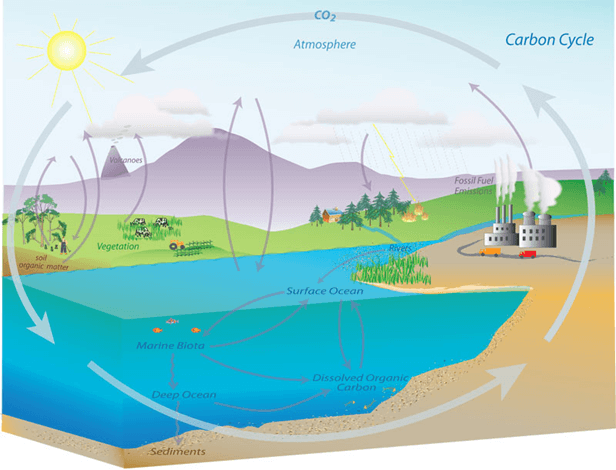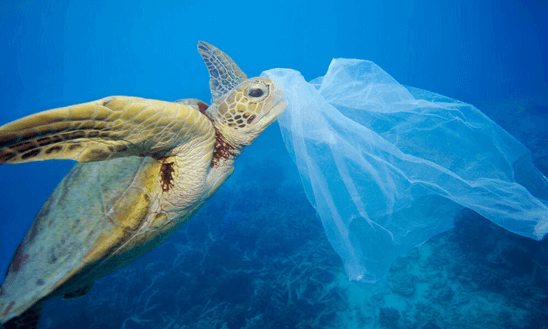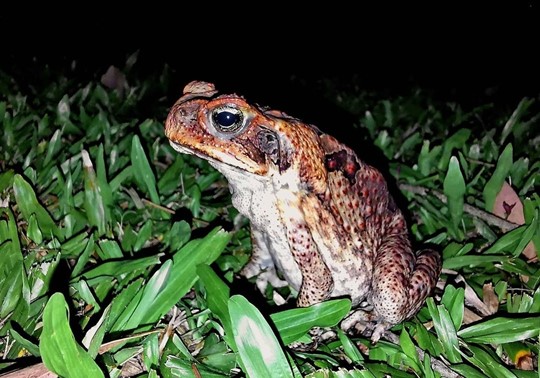Why is the environment dying?
This is a complex question. It is the sort of question we love to answer in science! But it is also a question that, when answering, can cause uncomfortable emotions. Before I go into this, I want to emphasise that I am genuinely optimistic about the future. As a species, our actions have changed the world, and will continue to change the world for some time. However, we are currently aware of the problems and there is an enormous movement of people working towards solutions.
In my branch of science – ecology (which is the study of interactions between living things and their physical surroundings) – the word environment describes any area in which an organism (or living thing) exists. Broadly, when a group of organisms rely on each other for survival and are dependent on particular environmental features, we call it an ecosystem. To clarify your question, environments change, but ecosystems die. We know why some of our ecosystems are dying, and I will try to outline some of the key causes below.
1: Greenhouse gas emissions and the deforestation of old growth forests.
Arguably more than any other cause, our emission of greenhouse gases drives shifts in our climate. They are called greenhouse gases because, in large quantities, they cause the planet to warm like a greenhouse.
Almost everything in nature endures when balanced. To paint a picture of global cycles, you can think of everything that releases gas as a pair of human lungs, and everything that stores gas as a tree. You know how when you breathe, you inhale oxygen, and then exhale carbon dioxide – but at the same time trees inhale carbon dioxide and exhale oxygen? Well, to an extent, the same balance exists in nature: There are things that naturally exhale greenhouse gases – such as volcanoes, bushfires, and animals (these can be thought of as the human lungs in our example). There are also things that naturally inhale greenhouse gases – such as plants, algae, and fungi (these can be thought of as the tree in our example). Normally, these things tend to balance each other, with the lungs breathing as much as the tree.
However, over the past century, humans have greatly reduced the number of trees on our planet, and artificially increased the amount of gas being released. This has destroyed the balance. What I mean by this is, where our example lungs used to contain gases only from natural sources (volcanoes, bushfires, animals, etc.), it now contains gases from sources that would never have been part of the global cycle. This is because these gases are released from the burning of fossil fuels – oil and other substances that are naturally locked deep underground. By digging these underground features out of the earth and burning them, we release more gas than our example tree (plants, algae, and fungi) is able to breathe. If the tree can’t breathe these gases in time, they get stuck in our atmosphere and cause greenhouse warming – heating the planet and disrupting every type of ecosystem.

2: Pollution
Environmental pollution exists in many forms, including chemical, pharmaceutical, and atmospheric. But the form that most people are familiar with, is plastic pollution. Plastic is an incredibly useful material, and that means that it is present in many of our household items. Unfortunately, plastic takes an enormous amount of time to break down in nature (I talk about this in another answer on the Curious Climate website: https://curiousclimate.org.au/schools_experts/benjamin-viola/).
One thing I didn’t talk about however, was that large pieces of plastic can look like prey items to animals. When they eat this plastic, it can get stuck in their bodies and potentially cause lethal harm. Animals are a crucial part of healthy ecosystems, and if too many animals die, it can have compounding flow on effects that alter entire ecosystems. For more information on this, check out the trophic cascades page on Wikipedia (I know it isn’t recommended to use Wikipedia for homework, but we all do…): https://en.wikipedia.org/wiki/Trophic_cascade

3: Invasive species
With colonisation, seafarers from around the world brought plants and animals from their land to other countries. These plants and animals (referred to as exotics) sometimes escaped and established feral populations. Feral species have an enormous impact on local ecosystems as they disrupt cycles that have established over thousands of years. For instance, the introduction of Cane Toads in Australia has pushed many native species towards the brink of extinction.
Cane Toads were introduced with the intention of protecting sugar cane crops from Cane Beetles. It was thought that Cane Toads would eat the Cane Beetles, and the crops would benefit from fewer Cane Beetles consuming sugar cane. Unfortunately, the Cane Toad didn’t eat the Cane Beetles, and given that the toads are toxic at all stages of their life cycle, many Australian species that consume Cane Toads die.
For example, the Northern Quoll was once widespread in Northern Australia, but since the introduction of the Cane Toad, it is now an endangered species. Cane Toads continue to spread throughout Australia. They aren’t able to survive in colder areas, but as the climate warms, they are capable of expanding to increasingly more regions. You can read more about this species and its impacts from a number of sources, but the New South Wales government has a great webpage on them.












